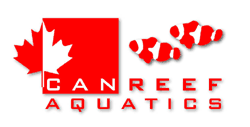
 |
|
|
|
#1
|
|||||
|
|||||
|
The test strips are for pool/spa. You should be able to get them any place that has pool or spa maintenance stuff. I think I might have seen the kit at Wal Merde but I got mine at a spa/hot tub business outlet. It's an AquaChek as you can see in the photo I posted. They also make kits that test for 'combined' or 'total' chlorine, but I'm not sure what that means exactly... combined with what? May or may not be ammonia. I think I read somewhere in the research that once chlorine hits the water, it starts 'combining' with some of the stuff which it's designed to kill or neutralize. This may not necessarily be ammonia, which is what it's combined with to make chloramine? Confused yet? I sure as hell am & real glad Vernon just uses chlorine.
There's already some good info on chloramines & how to best deal with them for our application on the Spectrapure FAQ site: http://www.spectrapure.com/SYSTEM_BREAKDOWN.htm phideltreefer already posted the link but only provided a partial quote in is post here. If you read the whole article, most of your questions should be answered. "Our dual cartridge combination of DI-SF-CI-10 followed by DI-AR-CI-10 is an effective and more economical way to remove the ammonia" Steve's link to reefkeeping pretty well covers it too....
__________________
Mike 77g sumpless SW DIY 10 watt multi-chip LED build Last edited by mike31154; 01-13-2012 at 02:29 AM. |
|
#2
|
|||||
|
|||||
|
Ok, thanks...was hoping I could get it at hardware store, but not likely I guess.
|
|
#3
|
||||
|
||||
|
Hi folks - thanks for the heads up Myka!.
The key with chloramines is to provide adequate contact time with the carbon prefilters. In some situations, one good carbon block is sufficient. Our practice to to always include two carbon prefilters in systems used with chloramines. Don't bother with a standard GAC cartridge. Catalytic GAC is another story. It is a super fast acting GAC and we include this as the first of two carbon stages in our Chloramine Special RODI's. The CGAC cartridges are axial flow - meaning the water must flow through the length of the cartridge to maximize contact time. The second carbon block we use is a top of the line, 20,000 gallon, 0.5 mic block - the best we can find. As mentioned previously in the thread, you will see relatively fasted DI depletion with waters containing chloramines. A dual stage DI is not a bad idea with these waters. Russ |